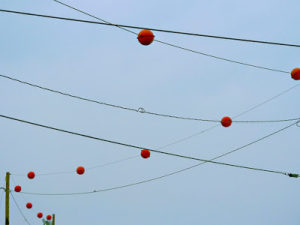It’s spring, daylight savings time does its job preserving the light, and there is more time after school to hastily dispatch homework and go outside and play. There’s a small playground just around the bend beside the building where I live, and that is where lessons in life outside the family take flight.
I remember the bullies; there seemed to be a lot of them. It didn’t matter much how old you were, or even how scrawny or beefy you were; if you were on the swing too long someone—undoubtedly a future lawyer, would come along and try to push you off. If you were brave enough, you might shout back, “It’s a free country!”
I shied away from most of those interactions, as I did from all those outside my immediate family. Kids, by and large, were cruel folks, and although I was full of envy for those who managed to get along, it was all too scary in the playground.
It’s a free country. How did we learn that? What does it even mean?
Curious, I once asked a colleague of mine in Armenia whether as a child she ever uttered any phrases similar to “It’s a free country!” She knew of no phrase in either Russian or Armenian that translated to anything like it. While our childhood lives had much in common, such as “duck and cover” and fallout shelters, what was then a Soviet state had no such notion of being a free country. (When I asked her about “It’s none of your business,” she likewise had no idea what I was talking about.)
As much as the current political situation in the U.S. sickens me, we still can boast some rather impressive freedoms. Pilots enjoy a relatively great amount of it. In the U.S., a pilot can fly his or her airplane legally from coast to coast without even so much as having a radio, as long as care is taken to avoid certain restricted airspace (such as Washington, DC and the area around certain major airports.) In most other countries, pilots not only have to be communicating with controllers, but they are required to pay “tolls” or taxes every time they take to the air. If I have the time, the hankering, and enough digits in the bank for fuel, I could drive the 15 minutes to my local airport, take out my airplane, and go flying about with no predetermined idea of where I want to go. I need no one’s permission. In that very real sense, it’s a fairly free country.
When I go to a foreign country I typically inquire about the state of general (as opposed to commercial) aviation. In Europe, it is similar to the United States, although considerably more regulated. In the Philippines, where my cousin lives and flies for a hobby, it is alive and well, and according to my cousin, not overly regulated. In Vietnam and most Communist or former Communist countries, it is essentially nonexistent. In Armenia, a post-Soviet country that claims to be a democratic republic, it is relatively non-existent, despite having a tradition, in “Soviet times”, of great aviation inventors and aviators. I imagine you have never wondered where the “MiG” designation in the Soviet MiG fighter jets derived from. They were designed and made by Mikoyan and Gurevich, hence the contraction “MiG”. Artem Mikoyan was one of many great Armenian inventors and aviators.
I haven’t been around a sandbox for a while, so I don’t know if some of those phrases I used to hear back when I was chronologically challenged are still popular. I don’t imagine, though, that kids are still yelling “It’s a free country!” at each other, but it may be so. I wonder, still, how it came about. I remember that my father taught me that “life isn’t fair’ and how to tie a Windsor knot, but I don’t think he ever uttered anything about this country being free.
Perhaps it was just something that became popular post WWII, given the struggle that most of the world engaged in order to obtain this illusory thing called freedom as it triumphed, at least in the eyes of the victors, over tyranny.
Certainly, freedom is both an illusion and a stark reality when bumping up against the lack of it. The Rhodes scholar and pop country songster cum actor Kris Krostofferson may have tried to convince his listeners that freedom was “just another word for nothing left to lose,” but that’s just too much a stretch for me (and Bobby McGee). As a child, freedom would have been the ability to play in a sandbox devoid of bullies, but that was not the world I lived in. Perhaps that is why, chronologically challenged on the other end, freedom is getting into an airplane, launching into space, stepping on the rudder and turning toward anywhere.


